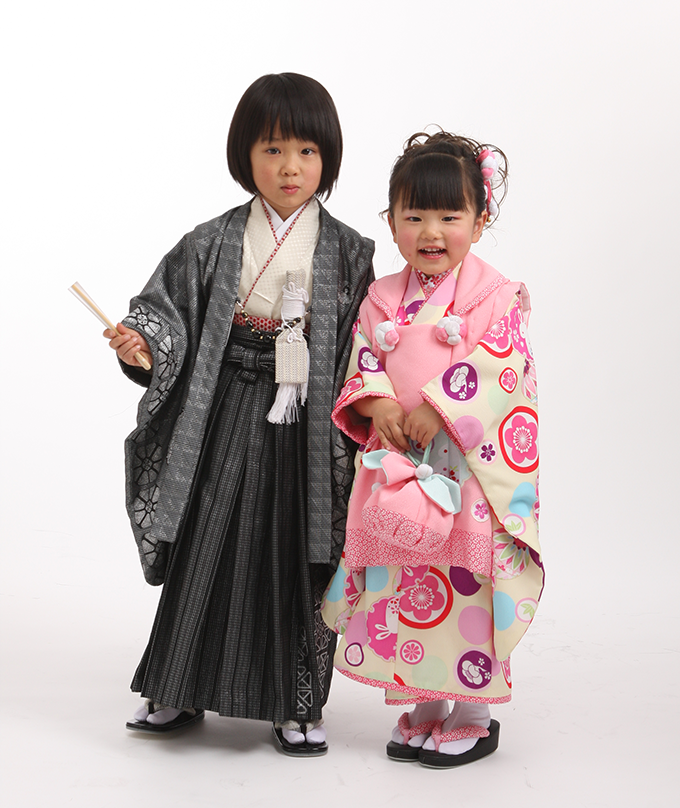Every year in November a traditional festival called Shichi-Go-San is held to express gratitude for the healthy growth of children and pray for their happiness in the future. In Japanese shichi is seven, go is five, and san is three. The festival is held around November 15 for boys aged 3 and 5 and girls aged 3 and 7. Shichi-Go-San has its origin in a time long ago when the death rate for children in Japan was high, so the healthy growth of a child was considered fortunate and a child was only recognized as a full-fledged member of society on reaching the age of 7. That’s why when children reached what were considered the critical ages of 3, 5, and 7, parents offered prayers of gratitude to the gods for the healthy growth of their children and also prayed that they would continue to grow up healthy and strong.
On the day of Shichi-Go-San, children are dressed in beautiful kimonos. It’s the first time for little girls to wear a touch of makeup, applied by their mother. The girls look so pretty, and the boys in a formal short kimono coat and long hakama skirt look very dignified.
Generally, families go to a shrine, pray, undergo ritual purification by the priest of the shrine, and take a commemorative photograph at a photographer’s studio. And let’s not forget chitose ame, a long stick of red and white candy made to celebrate children’s healthy growth. The candy is stretched lengthwise when it is made to symbolize long life and so it’s also known as thousand-year candy.
Recently, an increasing number of people celebrate Shichi-Go-San by just dressing their child in a kimono and having a photograph taken. But in whatever age, Shichi-Go-San will remain a sacred ceremony that manifests parents’ wishes for their children. Shichi-Go-San is about celebrating children’s growth and wishing for their happiness in the future. I hope this traditional Japanese festival for families will be valued and passed down for generations to come.
